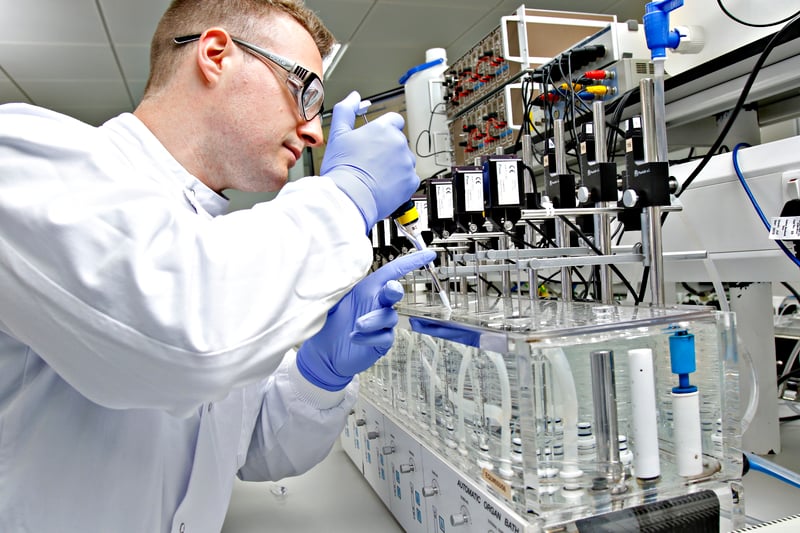Platform Technologies: Organ baths and wire myographs
At REPROCELL, our scientists have been performing experiments using organ baths and wire myographs for over two decades. Many tissue types can be used in these systems to measure drug behavior, including blood vessels, airways, gastrointestinal tissues, genitourinary tissues, and cardiac muscle.
What are organ baths and wire myographs?
Organ baths and wire myographs are versatile in vitro pharmacology techniques that are a mainstay of pharmacology. Many important discoveries have been made using these systems, including the experiments used to discover endothelium-derived relaxing factor (EDRF), executed by Nobel prize winner Professor Robert Furchgott.
Organ baths
Organ baths have been used for decades by pharmacologists to investigate nerve-muscle interactions and the contractility of smooth, cardiac, or skeletal muscles. In this system, isolated tissues are suspended within a fluid-filled, heated, and gassed chamber. Changes in tissue contractility are recorded via sensitive force transducers. Typical endpoints measured using this system include vasoconstriction, bronchodilatation, gastrointestinal motility, or bladder activity. Organ baths are suitable for a wide range of tissue types and sizes, from strips of muscle down to small airways or blood vessels ~2mm in diameter.

Diagram showing the setup of our organ bath system
Wire Myographs
Wire myographs are smaller versions of organ baths that allow investigation of the contractile and relaxant properties of isolated blood vessels and airways. They were originally developed by Professor Mike Mulvaney to sensitively measure vasoactivity of resistance arteries, however, they can also be used to investigate small airways. Tissues are mounted in the myograph horizontally between two stainless steel 'jaws' held in place by thin wires. As the tissue contracts or relaxes the change in force is transmitted via one of the wires to a sensitive isometric force transducer, capable of detecting micro-Newton forces.
This means that very small arteries, such as those vital to the control of organ-specific blood flow and the overall vascular component of blood pressure, can be studied ex vivo. Months of practice are required to dissect tissues without damage, and a high level of operator skill is vital.

Diagram showing the setup of our wire myograph system
Outsource organ bath and wire myograph studies
At REPROCELL, we have numerous Panlab organ baths at our laboratories in Glasgow and Maryland, with experienced scientists on hand to investigate the contractility of multiple isolated tissues at a time.
For example, multiple bronchi may be isolated from lung tissue to allow comparisons between the broncho-relaxant properties of compounds to treat asthma or COPD. The propensity of test compounds to cause vasoconstriction of coronary arteries, cardiac muscle contractility, or the nerve-mediated control of gastrointestinal tissues can be studied in organ baths.
